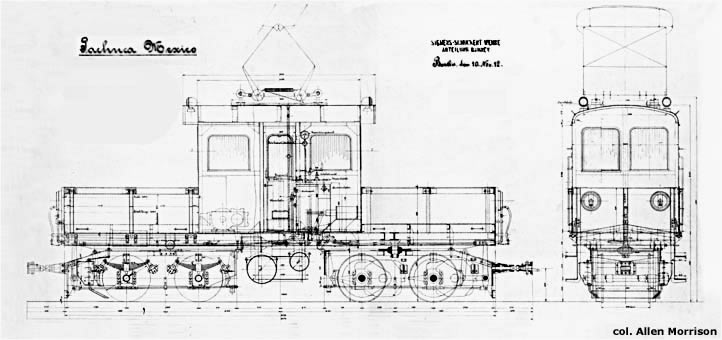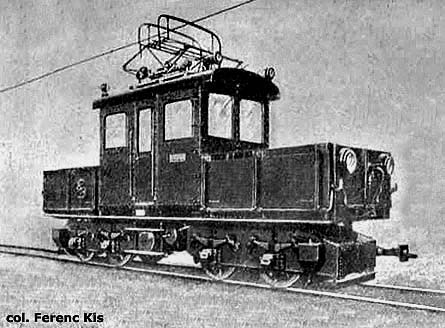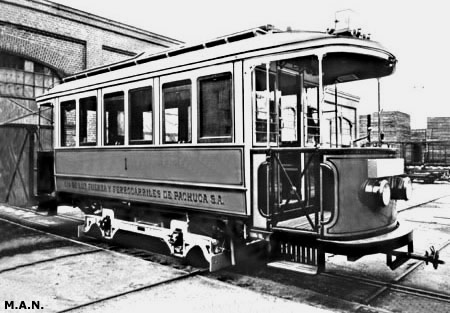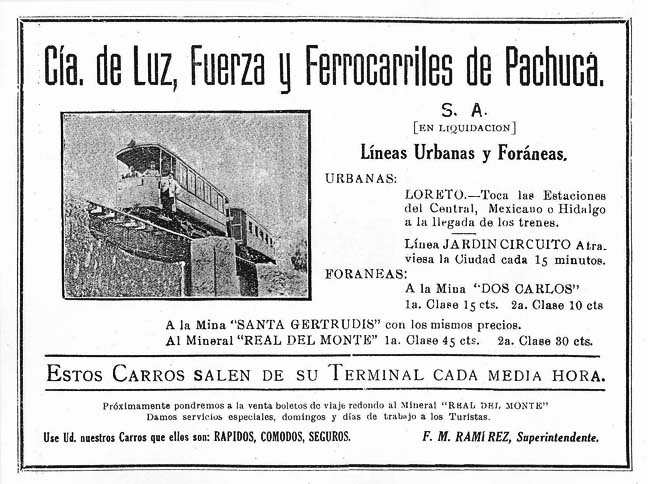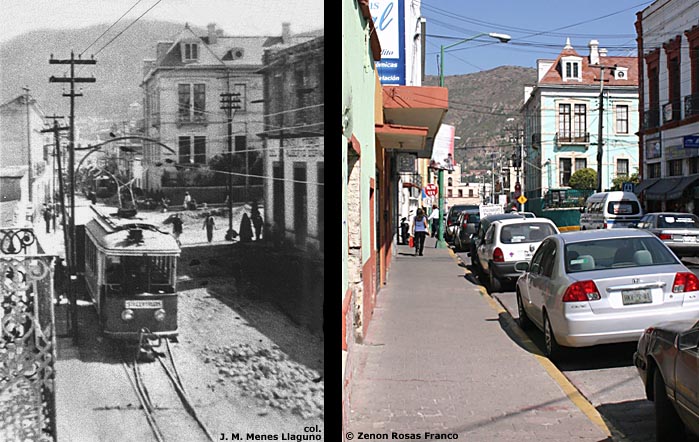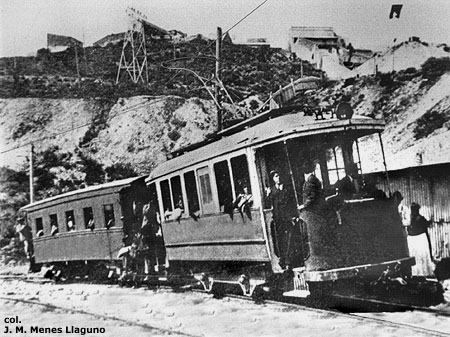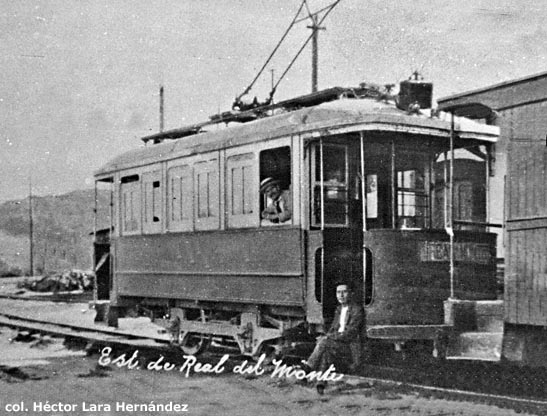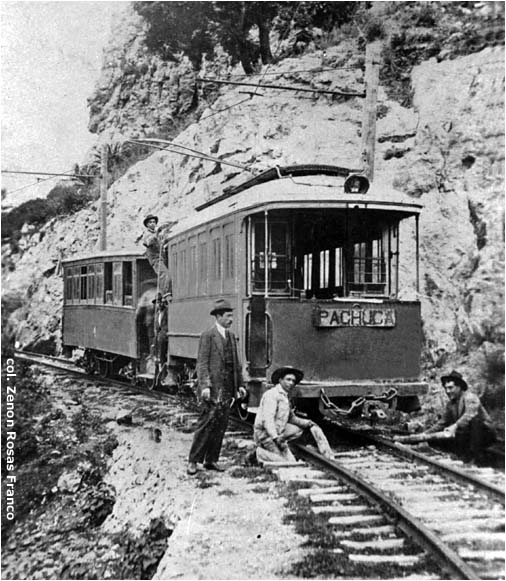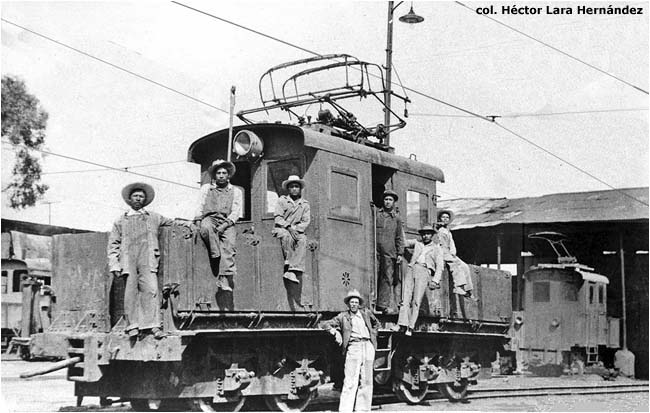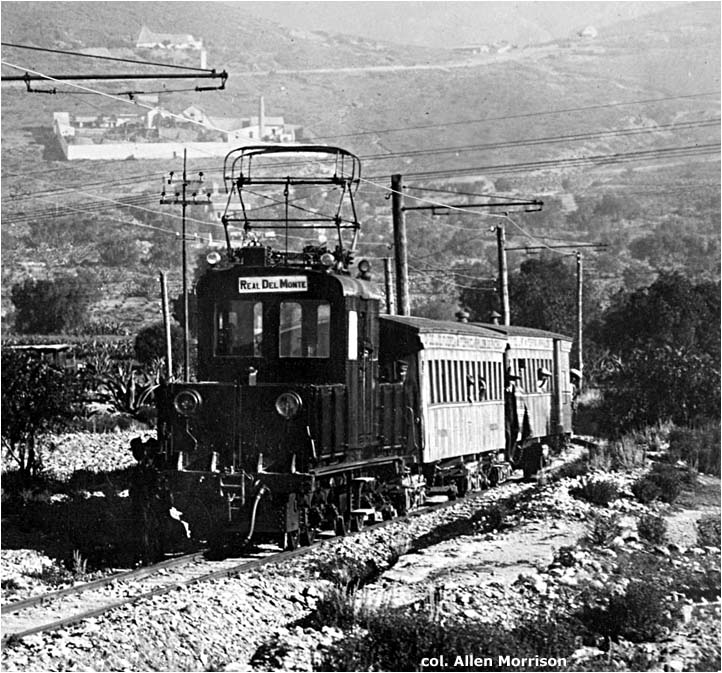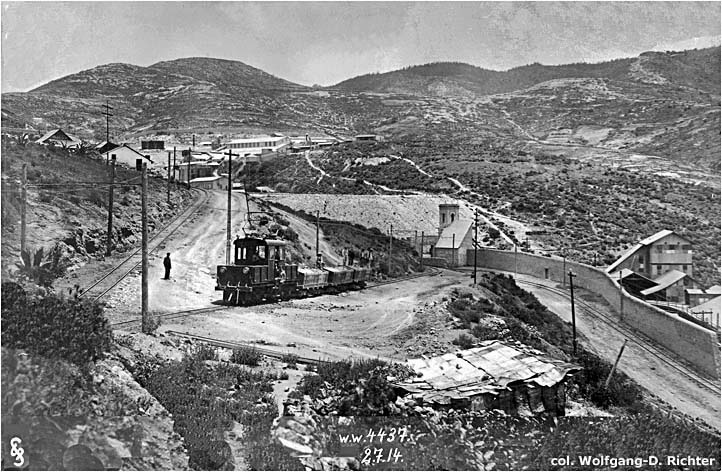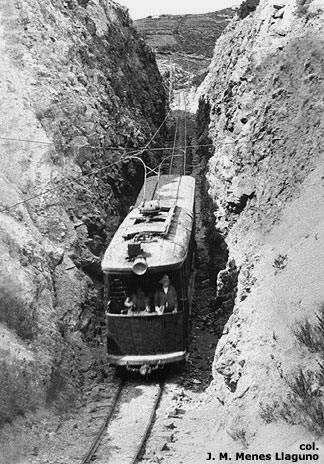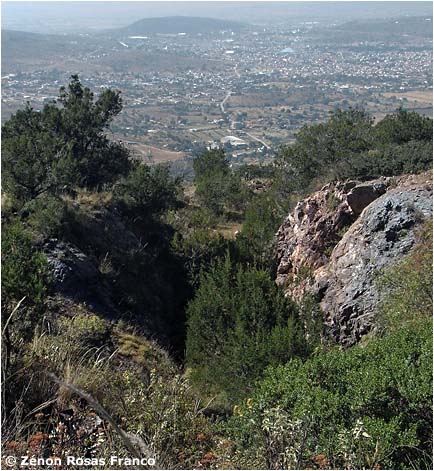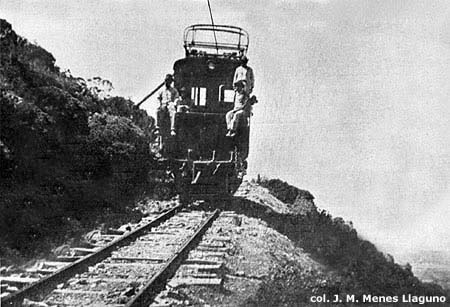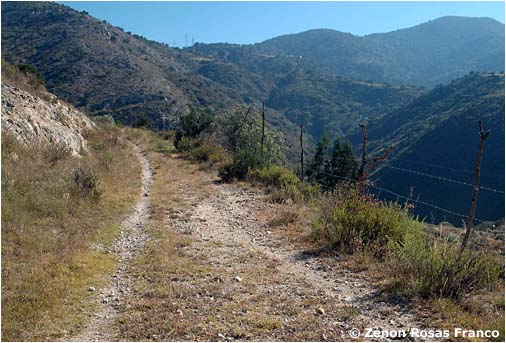The Tramways of
The date of the area's first mine railway is unknown (mine exploration began in the 15th century), but conventional railroads arrived around 1880. Three lines connected Pachuca with Mexico City; one of them, the Ferrocarril Hidalgo, used animal power during its first year of operation. In 1883 the Real del Monte mine built a 14 km steam railroad to transport its workers to and from Pachuca [see map]. The local street railway in Pachuca, which used both animal and steam power, had 27 km of 914 mm (36 in) gauge track by 1905. In February 1906 the Real del Monte mine was acquired by U.S. Smelting, Refining & Mining Co., which hired Siemens-Schuckert Werke of Berlin for electrification. Siemens electrified the mine, the interurban railway and the tram lines in Pachuca – and also supplied electric locomotives and passenger cars. The Siemens locomotives consisted of both 2- and 4-axle models. Here is a drawing of the latter, which specifies 914 mm track gauge, the same used in the steam days [col. AM]:
The illustration below from a Siemens catalog shows the Pachuca locomotive depicted in the drawing above [col. Ferenc Kis, courtesy Giovanni Fullin]:
Here is a catalog photograph of Pachuca's 2-axle locomotive. Note the Siemens-Schuckert "S/S" logo on its side [col. AM]: 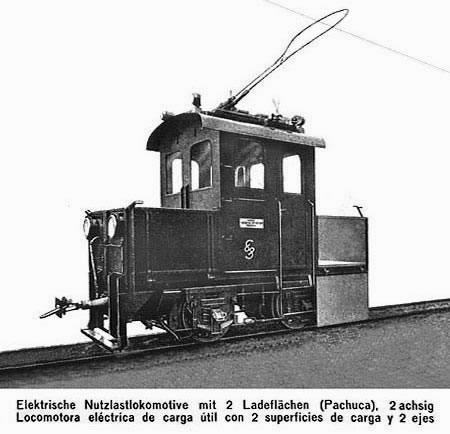
For Pachuca's local system, Siemens ordered five 2-axle trams from Maschinenfabrik Augsburg Nürnberg ("M.A.N.") in Germany. Cars 1-3 had six side windows and seats for 20 passengers. Here was number 1 [M.A.N.]:
Cars 4 and 5 had four side windows and seats for 12 [M.A.N.]: 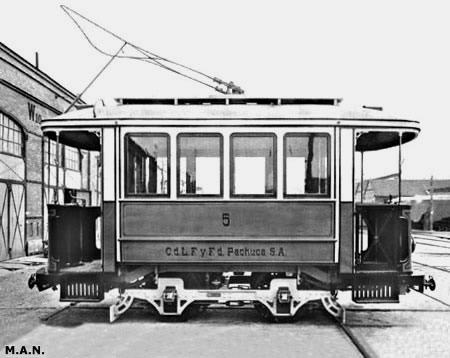
The date when the new Compañía de Luz, Fuerza y Ferrocarriles (Light, Power and Railways Company) began carrying passengers could not be found – but it is presumed to have been around 1912. (Siemens also electrified the tramway in nearby San Luis Potosí in 1912.) The following poster notes the urban and "foráneas" (suburban) routes and fares [col. Héctor Lara Hernández]:
The photograph below, dated 1918, shows one of the small 4-wheelers at the Ferrocarril Central station [see map]. It has had its headlight moved to the roof. Pachuca had the only electric tramway in Mexico that used 914 mm = 36 in track gauge [col. Juan Manuel Menes Llaguno]: 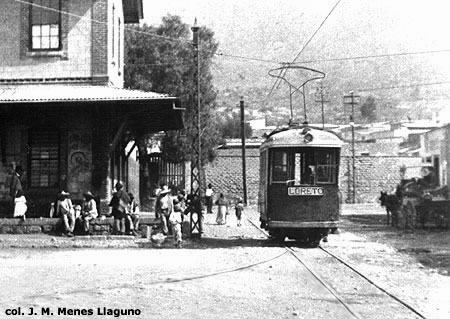
The larger cars ran on the suburban lines. This one, signed for "Santa Gertrudis" mine, is about to leave its downtown terminal on Calle José Morelos [see map]. Note the classic curved wire bracket, a signature of German tramway construction throughout the world [col. Juan Manuel Menes Llaguno]. The color photograph shows the same location in 2010. The handsome building in the background, on Plaza Anaya, is the Ayuntamiento (City Hall) [Zenon Rosas Franco]:
The electric train below is on the Real del Monte line [see map]. The passenger trailer dates from steam days. The 14-km journey allegedly required two hours [col. Juan Manuel Menes Llaguno]:
According to the postcard caption, the 6-window car below, pulling the passenger car on the right, is at Real del Monte station [col. Héctor Lara Hernández]:
This convoy on the Real del Monte line seems to be having mechanical problems [col. Zenon Rosas Franco]:
CLFF employees posed on one of the 8-wheel locomotives at the shops in Pachuca [col. Héctor Lara Hernández]:
One of the large locomotives pulling a passenger train. The Real del Monte line was costly to construct and wonderful to ride [see map]. Residents rode it for pleasure on Sunday afternoons. A destination sign is not often seen on a locomotive [col. AM]:
Near Real del Monte the line had two switchbacks – among the few known examples of zig-zags on an electric railway. This train is going downhill; it has just come forward down the grade on the left, reversed, and is now backing down to the second switchback in the center. Note the double-S Siemens-Schuckert insignia in the corner and the date: 2 July 1914 [col. Wolfgang-D. Richter]:
A "cut" on the Real del Monte line [col. Juan Manuel Menes Llaguno]:
In November 2010 Peace Corps volunteer Mindy Kuth and Pachuca resident Zenon Rosas Franco traced the entire 14 km Real del Monte route on foot. This photograph shows the "cut" of the black/white view above, as seen 70-90 years later [Zenon Rosas Franco]:
This is believed to be the same spot shown above, 70 years after the railway disappeared [Zenon Rosas Franco]:
The 1924 edition of the McGraw Electric Railway Directory (published in New York) stated that Compañía de Luz, Fuerza y Ferrocarriles de Pachuca operated 21 miles (34 km) of track, 5 locomotives, 5 motor cars and 60 'other' cars that year. Apparently CLFFP controlled the suburban as well as the local lines. The fate of the system after that date is unclear.
Compañía Real del Monte y Pachuca, Archivo Histórico. Guia general del Archivo Histórico de la Compañía de Minas de Real del Monte y Pachuca. Mexico City, 1993. Brief history of the mine, description of the archive. Antonio Lorenzo Monterrubio. Arquitectura, urbanismo y sociedad en la ciudad de Pachuca durante el porfiriato. Mexico City, 1995. The chapter "Vías de comunicación", pp. 82-88, outlines railroad development but does not mention trams! Tram picture, p. 170. In his "wikiloc" report on the Sendero donde corria el tren Pachuca-Real del Monte [Path of the Pachuca-Real del Monte train], adventurer/photographer Zenon Rosas Franco describes his 2010 inspection and presents six of his photographs (three of which are shown above).
The author is grateful to Mindy Kuth and Zenon Rosas Franco for the information and illustrations that they contributed to this page.
return to also see
|
